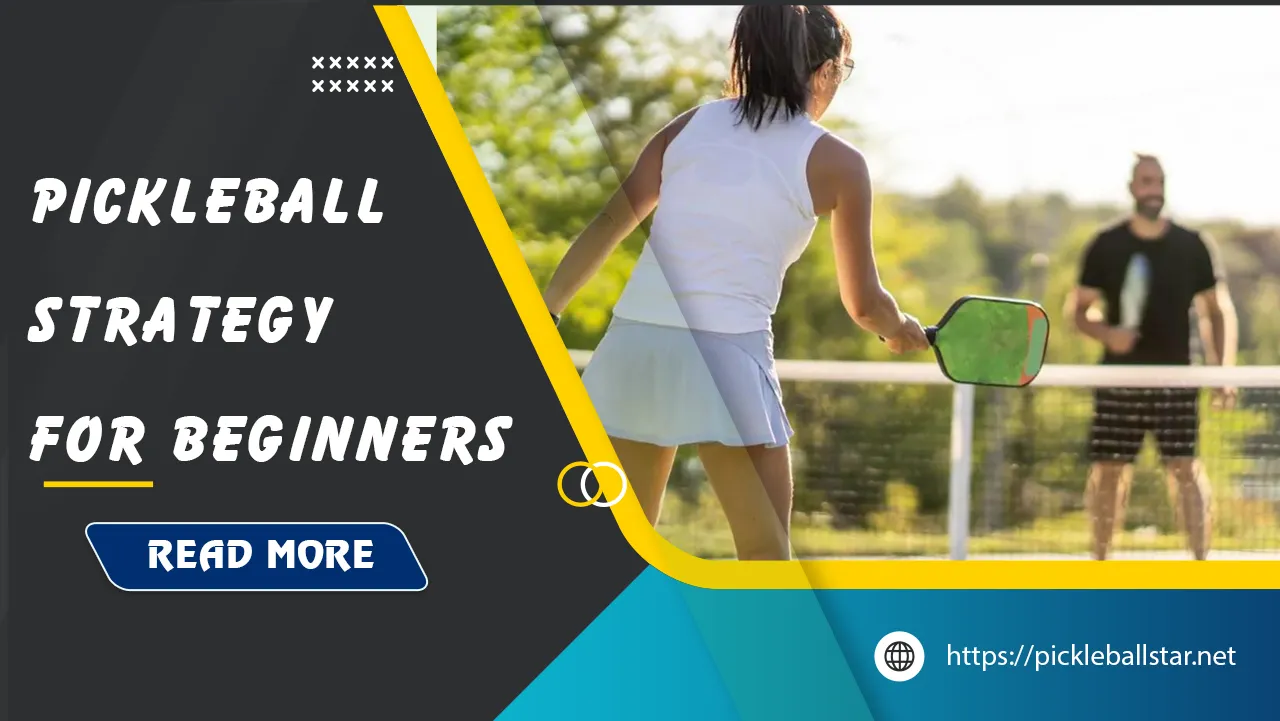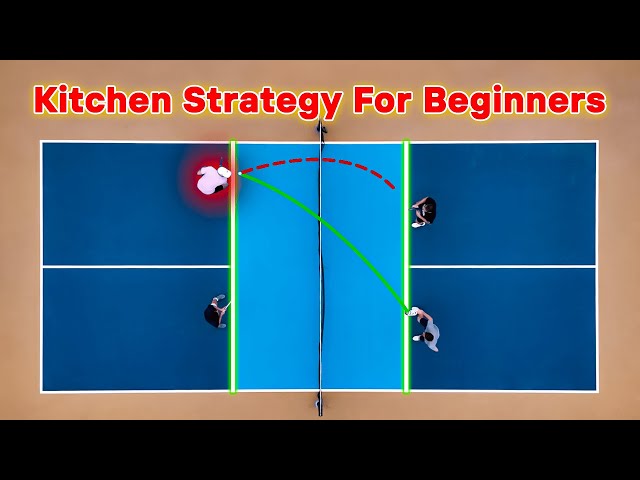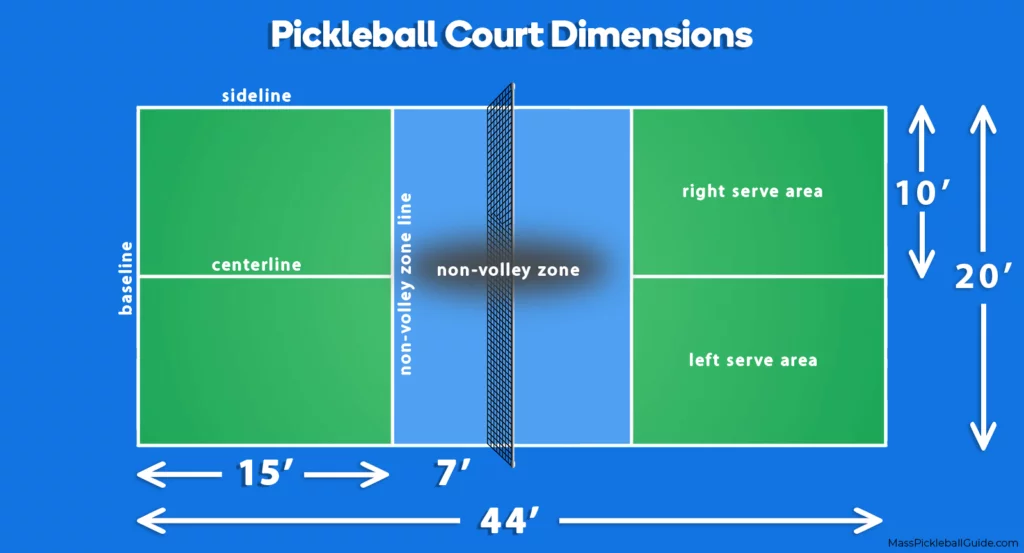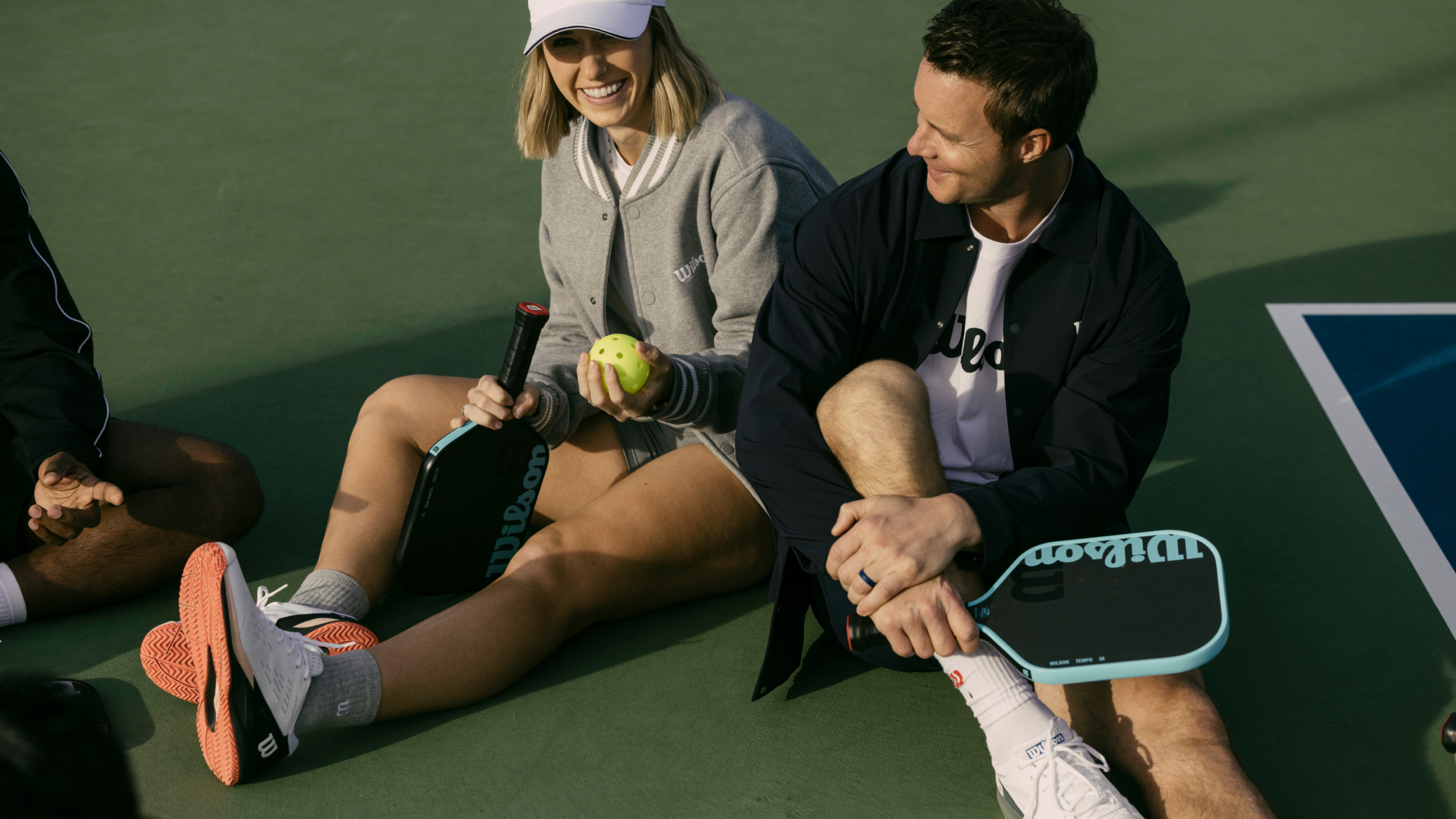Pickleball Strategy for Beginners: Unlocking Success on the Court
Are you ready to elevate your pickleball game? If you’re new to this fast-paced, fun-filled sport, understanding the right strategies can make all the difference. In this guide to pickleball strategy for beginners, we’ll break down essential tactics that can transform your gameplay from average to exceptional. Discover how positioning, shot selection, and court awareness can give you the competitive edge you need. Dive in and unlock the secrets to mastering pickleball with confidence and finesse. Ready to serve up success? Let’s get started!

The Kitchen Zone: Your Safe Haven
The Kitchen Line: What It Is and Why Beginners Should Avoid It
The “kitchen” in pickleball isn’t where you prepare your meals, but it can be just as important. Defined as the non-volley zone, the kitchen line is a critical area at the front of the court. As a beginner, understanding this zone is key to mastering pickleball strategies.

- Meaning of the Kitchen Line: It runs parallel to the net and extends 7 feet back.
- Why Avoid It? Stepping into the kitchen can lead to faults if you volley the ball.
Imagine you’re in a cooking competition staying organized and aware of each step is crucial. Similarly, in pickleball, avoiding the kitchen line can make sure you’re playing efficiently and within the rules.
Mastering the Dink: A Simple Pickleball Strategy for Beginners
One of the most effective strategies in pickleball is the “dink,” a soft shot that lands just over the net into the kitchen. It’s a simple yet highly strategic shot that can disrupt your opponent’s game plan.

- How to Dink:
- Use a gentle touch to ensure the ball drops just over the net.
- Aim for your opponent’s feet or towards the corners.
- Benefits for Beginners: Mastering the dink requires finesse rather than power, making it a great shot for beginners to focus on.
Think of a dink as a delicate ballet move graceful yet powerful in its own right. Mastering this can make your game both elegant and formidable.
The Poach (For Beginners): When to Attack the Net and Score Points
The term “poaching” might sound sneaky, but in pickleball, it’s a legitimate and smart strategy. The poach involves moving quickly to intercept a shot intended for your partner, thereby taking the net and applying pressure on your opponents.
- When to Poach:
- Watch for weak returns and seize the opportunity.
- Communicate with your partner to avoid confusion.
- Why Poach as a Beginner? Taking the net can control game tempo and force errors from your opponents.
Imagine you’re a lion waiting to pounce on its prey poaching in pickleball gives you that same exhilarating rush and also the advantage on the court.
Read more:
The Baseline: Your Home Base

Returning Serves Like a Pro: Easy Strategies for Beginners
Returning serves effectively is fundamental to gaining control over a game. As a beginner, positioning and anticipation can be your best allies.
- Tips for Return Serves:
- Stay low and balanced to react quickly.
- Aim deep to push your opponents back.
- Why Focus Here? Good return serves prevent your opponents from taking the net early.
Think of it as catching a ball thrown by a friend stand ready, eyes focused, and body prepared for action.
Hitting Deep Shots: A Beginner’s Guide to Controlling the Court
Control is a powerful asset in pickleball. Hitting deep shots can keep your opponents on the back foot, giving you more space to maneuver.
- Techniques for Deep Shots:
- Use wrists for added spin.
- Aim for the back third of the court.
- Benefits: Deep shots disrupt your opponents’ positioning and keep rallies longer.
Imagine you’re playing chess every deep shot is like moving a piece to gain a strategic advantage. Outmaneuvering your opponent becomes simpler with this approach.
The Lob: A Powerful Tool for Beginners to Play Smart
The lob is an often-underestimated shot that can change the dynamics of the game. By sending the ball high and deep, you force your opponents out of position.

- How to Execute a Lob:
- Use an underhand stroke and follow through properly.
- Aim for the back corners.
- Advantages: It’s a great way to reset a point and avoid getting trapped in a quick exchange at the net.
Picture a soaring eagle majestic and in control. A well-placed lob gives you that same sense of power and control over the game.
Strategic Play: Winning Rallies as a Beginner

Anticipate Your Opponent: Simple Strategies for Reading the Game
Being able to anticipate your opponent’s moves can turn the tide in any pickleball match. Observation and quick reflexes are crucial.
- Watch Their Positioning:
- Are they favoring one side?
- Is their backhand weaker?
- React Accordingly: Place your shots where they’re least expected.
Think of it as playing poker calculating your opponent’s next move can be the difference between winning and losing.
Find Your Opponent’s Weaknesses and Exploit Them: Winning Tips for Beginners
Every player has a weakness, and as a beginner, learning to identify and exploit these weaknesses can give you an upper hand.
- Observing Faults:
- Look for consistent errors (e.g., backhand misfires).
- Note hesitation or slow reactions.
- Attack the Weakness: Focus your strategy on this vulnerable spot.
Imagine Sherlock Holmes on the court, deducing every flaw to win the match. Your analytical approach can be just as thrilling and effective.
Adapt Your Game to Your Opponent: Strategies for Success at Any Skill Level
The best players can adapt their game to suit the opponent’s skill level. Flexibility and adaptability are key ingredients.
- Assess Constantly:
- Are they playing aggressively or defensively?
- Do they change tactics mid-game?
- Adapt Your Playstyle: Switch between offense and defense as needed.
Think of it like dancing sometimes you lead, sometimes you follow. This fluidity can confuse and outplay any opponent.
Read more: Pickleball Strategy for Intermediate Players: Elevate Your Game to the Next Level
Winning the Mental Game: Confidence and Enjoyment
Enjoy Pickleball: Strategies for Having Fun and Staying Positive
To truly excel, you need to enjoy the game. Balancing fun and competitiveness can make you a better player over time.
- Keep a Positive Attitude:
- Celebrate small victories.
- Laugh off mistakes.
- Enjoy Every Moment: The fun you have directly impacts your performance.
Picture the joy on a child’s face as they play it’s infectious and can make you play more freely and effectively.
Be Patient and Persistent: Tips for Beginner Pickleball Players
Rome wasn’t built in a day, and neither is a successful pickleball player. Patience and persistence are crucial.
- Stick to the Process:
- Practice regularly.
- Reflect on your performance.
- Stay Persistent: Improvements come with time.
Imagine a gardener tending to a sapling care and persistence lead to growth. Your pickleball game is the same.
Don’t Be Afraid to Make Mistakes: Learning and Growing in Pickleball
Mistakes are part of the learning curve. Embracing them can turn failures into valuable lessons.
- Learn from Errors:
- Analyze what went wrong.
- Make adjustments accordingly.
- Grow Continuously: Every error is an opportunity to improve.
Think of mistakes as road signs guiding you each one brings you closer to your destination.
FAQs
What are the most important things to remember about the kitchen line as a beginner?
As a beginner, the kitchen line can seem like a daunting concept. Here are some key points:
- Stay Out of the Non-Volley Zone: As much as possible, avoid stepping into the kitchen.
- Understand Its Significance: Recognizing when the ball is in the kitchen helps you make better decision.
- Practice Positioning: The more you play, the better you’ll get at positioning near the kitchen.
How can I use dinking to my advantage as a beginner?
Dinking is a valuable tool for any beginner:
- Keep It Soft: Gentle touches make the ball land close to the net.
- Target Corners: Force your opponents to move.
- Practice Placement: The more precise your dinks, the more effective they’ll be.
When should I move to the net in doubles as a beginner?
Timing your move to the net can significantly impact your game:
- After Strong Serves: Move up once you’ve delivered a deep serve.
- On Your Partner’s cue: Coordinate with your partner for strategic net play.
- When Poaching an Opportunity: Seize weak returns to approach the net.
Read more: Pickleball doubles strategies
How can I improve my return of serve in beginner matches?
Improving your return of serve is vital:
- Focus on Consistency: Aim to get your return in play every time.
- Use Deep Returns: Push your opponents back.
- Work on Placement: Target the weaker side of your opponent.
What are some tips for staying focused and having fun as a beginner?
Maintaining focus and enjoyment is key for beginners:
- Set Minor Goals: Celebrate achieving them.
- Enjoy the Game: Focus on the fun aspect, not just winning.
- Stay in the Moment: Mindfulness can enhance your play and enjoyment.
Conclusion
Now that you’ve absorbed these pickleball strategies for beginners, it’s time to hit the court. Each game you play is another opportunity to refine your skills and grow as a player. Begin implementing these strategies and watch your confidence soar!
Remember, every expert was once a beginner. Your journey to becoming a proficient pickleball player starts now. Embrace the process, celebrate minor victories, and most importantly, have fun.
The world of pickleball offers endless fun combined with strategic depth. By applying these beginner strategies, you not only enhance your game but also enrich your overall playing experience. So grab your paddle, gather your friends, and let the fun begin!
The motto is simple: don’t just play, play smart! Enjoy your pickleball journey.
